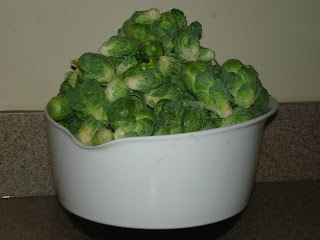We had a wet week (no complaints there!) ending with some great 76 degree F sunshine and drying just enough to work the soil. Peas by St. Patrick's Day is an easy date to remember (or one month before last frost in other zones); I pre-sprout my seeds between damp paper towels in a dark, warm area (like on top of the refrigerator), mix with a powder inoculant (rhizobia bacteria for nitrogen fixing), then set them carefully in the ground to finish sprouting and grow. A boost from bone meal mid-season will supply extra phosphorous for a great harvest.
It looks like 80% of the spinach seed sprouted (much better than average -- my experiment worked!), but this is interesting, I planted different brands in each row. Burpee had excellent germination, but Ferry Morse was very poor: both brands were purchased at the same home improvement store. Granted, the seed is two years old because it was packaged for 2010 (since we moved last year we did not put in a garden). But I'll be using Burpee from now on! It's not too late to re-seed.
 It's time to harvest brussels sprouts. If you never liked them as a kid, garden-fresh are nothing like the kind that come from grocery stores. Our winter-grown brussels sprouts are buttery sweet and melt-in-your-mouth tender! We blanched and froze enough to pull out later when we want them. By July it will be time to start new seed for next Fall's plants.
It's time to harvest brussels sprouts. If you never liked them as a kid, garden-fresh are nothing like the kind that come from grocery stores. Our winter-grown brussels sprouts are buttery sweet and melt-in-your-mouth tender! We blanched and froze enough to pull out later when we want them. By July it will be time to start new seed for next Fall's plants.  What a busy weekend, from mowing the lawn, to mulching foot paths in between vegetable rows, there was more to do than time to do it. This 'Salad Bowl' leaf lettuce over-wintered from last Fall. We like it because of the bright apple-green color and excellent flavor even into hot weather. This weekend I put in a wide, intensive bed of lettuces. Intensive beds yield more per sq. ft. because plants are not cultivated in traditional single-file rows but rather in wide blocks.
What a busy weekend, from mowing the lawn, to mulching foot paths in between vegetable rows, there was more to do than time to do it. This 'Salad Bowl' leaf lettuce over-wintered from last Fall. We like it because of the bright apple-green color and excellent flavor even into hot weather. This weekend I put in a wide, intensive bed of lettuces. Intensive beds yield more per sq. ft. because plants are not cultivated in traditional single-file rows but rather in wide blocks. We use wheat straw to mulch in between vegetables, but since most wheat straw contains viable wheat seeds (which can sprout and turn into "weeds" even though wheat is an edible crop), it has to be de-seeded. With a little planning, this is easy: we purchase several bales of wheat straw in the autumn and throw them in the front yard with a few pumpkins; everybody loves the seasonal display. Bales overwinter outdoors in the rain around the compost bin, where they become saturated. Seeds inside either sprout on the bales (adding more organic material) or suffocate. By Spring bales can be broken apart and spread as mulch on the garden, where it will compost over the season while keeping weeds down and soil cool and moist.

No comments:
Post a Comment